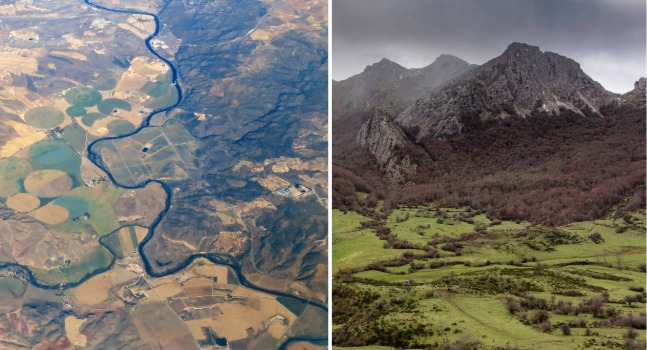25 de March de 2025
A research team led by the University of Salamanca (USAL), with the participation of Geociencias Barcelona (GEO3BCN-CSIC), has published a study in the journal Gondwana Research that updates current knowledge on the structure and formation of the Earth’s crust in the northwest of the Iberian Peninsula.
The study, conducted within the framework of the CIMDEF and ALCUDIA projects, presents a new model of the deformation mechanisms of the Iberian crust based on seismic data processed with advanced techniques. “The study reveals the internal structure of the crust from the North Iberian Margin, in Asturias, to the Central System and the Madrid Basin,” explains Irene de Felipe, USAL researcher and lead author of the article.
The results show that the Cantabrian Mountains and the Central System exhibit different deformation mechanisms within the same tectonic process. “In the Central System, deformation is characterized by minimal horizontal tectonic shortening, while in the Cantabrian Mountains, deformation is decoupled between the upper and lower crust, with greater horizontal shortening,” notes de Felipe, who was also part of GEO3BCN-CSIC until 2021.
The study, which also involved the University of Granada and the Institut Cartogràfic i Geològic de Catalunya, analyzes the topography between the Duero and Tagus basins. “For the first time, we present a configuration of the lithospheric base beneath the Central System and provide an initial image explaining the topographic difference between the two basins,” states Ramón Carbonell, GEO3BCN-CSIC researcher and leader of the study. According to the study, this difference is due to the interaction between the lithosphere and the mantle.
The data used come from the ‘Controlled-Source Seismology’ technique, which allows for precise imaging of the Earth’s interior. “We generate small controlled earthquakes that provide us with accurate images of the crust’s structure,” highlights Puy Ayarza, Professor of Geology at USAL. For the CIMDEF project, more than 1,000 seismic sensors were deployed along 400 km of the Iberian Peninsula.
This study contributes to understanding the geological evolution of the region and provides a foundation for future research on crustal dynamics in the context of the collision between the African and Eurasian tectonic plates.
Original press release published by USAL
Reference
DeFelipe, I., Ayarza, P., Palomeras, I., Ruiz, M., Andrés, J., Yenes, M., Martínez Poyatos, D., & Carbonell, R. (2025). A crustal-scale section of central and NW Iberia: Deformation mechanisms and transfer during the Alpine compression. Gondwana Research, 140, 101–117. https://doi.org/10.1016/j.gr.2025.01.011

